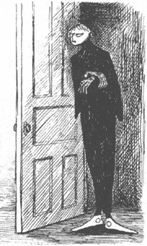Last year, I came down with a headache that just would not go away. It wasn’t agonizing, but it was around a 4 or 5 on the 0-10 pain scale (with 10 being the worst possible pain ever). But it was unrelenting. Nothing took the edge off except Vicodin. I had it for a month and a half before a friend suggested I try getting my hormone levels tested. It turned out my estrogen levels were unusually high and my progesterone levels unusually low, producing a nasty condition called estrogen dominance. I started treatment, which included a variety of supplements and a regimen of progesterone replacement pills.
It’s better (the headache is gone, for one thing) but my hormones are still out of whack. My nutritionist ordered me to cut out all sources of estrogen or estrogen-mimicking chemicals (which I like to call pseudoestrogens, though I don’t think they have such a catchy name in the medical community). This meant filtering my water and, much more difficult, removing plastic from as much of my food service as possible. No more plastic or polycarbonate water bottles, no putting hot food (or heating food) in plastic containers, etc. I was a bit surprised — plastic contained pseudoestrogens?
Then the May issue of Discover magazine came out, and Antwon pointed out the article “Plastic People of the Universe” by Jill Neimark. Hoo-boy.
I strongly recommend that ANYBODY who is pregnant, planning to become so, or who has small children read this article. Also anybody who drinks water out of plastic or polycarbonate water bottles. Or has breast cancer in their family.
OK, really, everybody needs to read this article. (It’s available online with a different title here.)
I can’t do it justice with a summary — it’s four and a half pages long, with very few photos — but the gist is this: many plastics contain one or both of two chemicals, phthalates and bisphenol A (BPA), which even in incredibly miniscule amounts do things like cause chromosomal abnormalities, increase hormonal sensitivity, and increase the likelihood of cancer. Chromosomal abnormalities cause the spontaneous miscarriage of one in ten human pregnancies.
Phthalates cause enough problems in developing infants and toddlers that the European Union has already banned them and Governor Schwarzenegger signed legislation recently to strictly control them in products for children under the age of 3. High phthalate levels in pregnant women also result in physical changes in their babies.
BPA was once considered as a synthetic estrogen for menopausal women. It was abandoned in favor of a more potent chemical, but still leaches out of those polycarbonate water bottles so many folks tote these days (I us a metal one I got at Whole Foods. You can also find them at REI). One exposure to BPA can hit three generations with its effects — the mother consumes it, it crosses the placenta into the fetus within her, and it affects the ovaries of that developing fetus if it’s a girl.
Right now, manufacturers are not required to list phthalates as ingredients, and they are in things like makeup and shampoos as well as baby bottles and toys. Polycarbonates, which are most commonly used for water bottles for adults, leech BPA at a terrific rate — and consistent, daily exposure is the kind that’s the worst. The only way things will change is if consumers change their habits. The industry can respond very quickly when consumers demand it.
So demand it. Educate yourself and change your habits. This shit will mess you up and mess your children up, and it’ll do it slowly and quietly. The time to act is now.
Resources:
- Discover Magazine’s The Dirty Truth About Plastic – MUST READ
- The Green Guilde’s The Bisphenol-A Debate: A Suspect Chemical in Plastic Bottles and Cans
- Wikipedia on BPA
- Wikipedia on phthalates
- The Z Report on BPA in infant care products
- Our Stolen Future on BPA
- NY Times article on BPA
- Z Report on BPA in Baby Bottles
- Science Daily on BPA in water bottles
- The Daily Green on how to avoid phthalates
- Our Stolen Future on phthalates
- Reuters on phthalates



